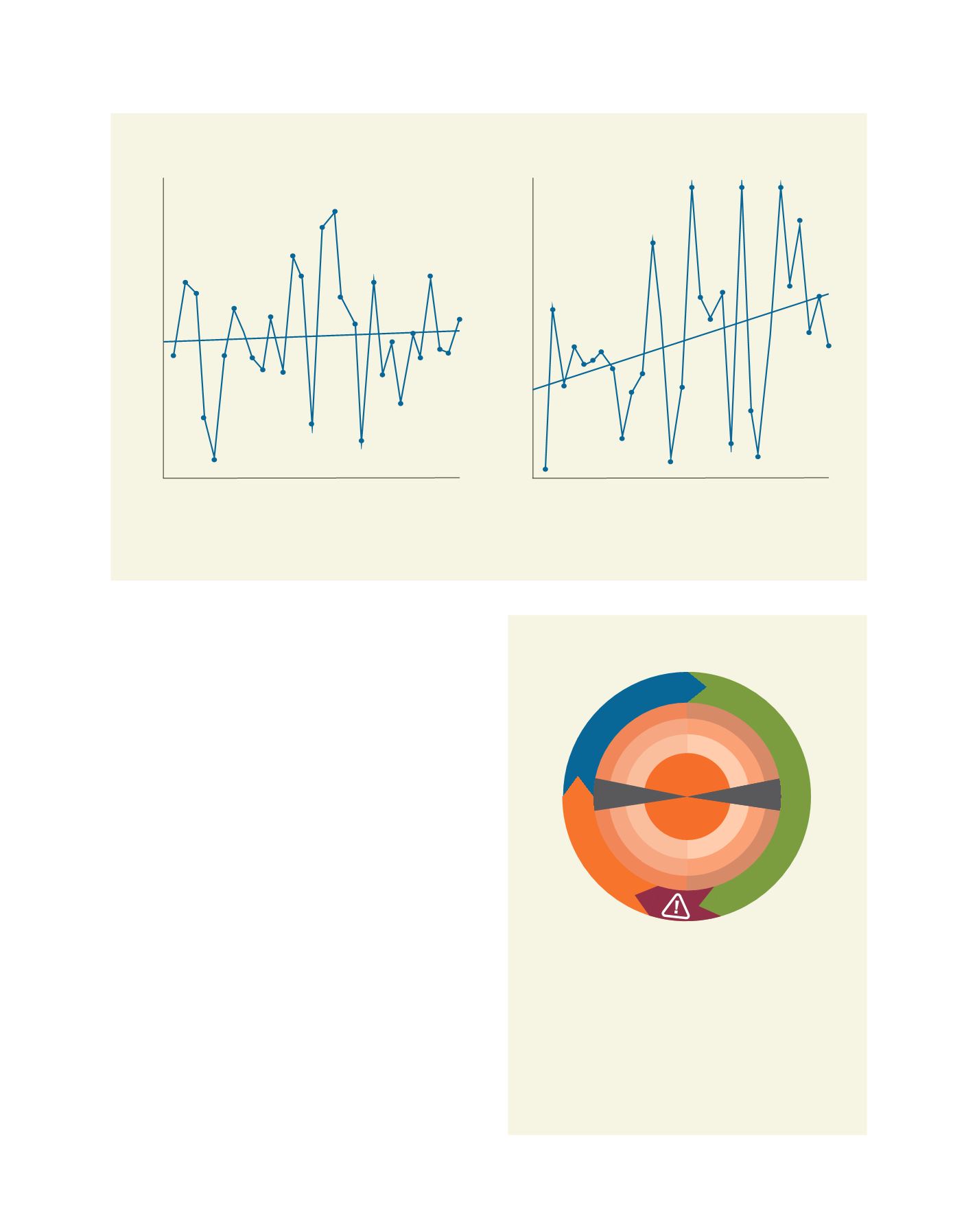

[
] 185
Mean rainfall for Air Itam and Simpang Ampat, 1983-2012
2010
2006
2002
1998
1994
1990
1986
1982
2010
2006
2002
1998
1994
1990
1986
1982
Year
Air Itam
Simpang Ampat
Year
Mean rainfall (mm)
Mean rainfall (mm)
5
6
7
8
9
10
4.5
5.0
5.5
6.0
6.5
7.0
7.5
Source: USM
The DRM-SD model for risk reduction
It is assumed that the radius of the right hemisphere represents
the full risk and that on the left, the full disaster. The key to
the successful implementation of the model is the ability to
progressively reduce risk through mitigation (R
1
), adaptation (R
2
)
and readiness (R
3
) measures carried out ‘before the event’ under
‘prevention’ and ‘preparedness’. The residual risk is shown by
R
4
which when realized as disaster (D
1
) is presumably small and
manageable. The post-disaster activities relief (D
2
), restoration (D
3
)
and sustainable development (D
4
) will enhance resilience (reduced
disaster) under the response and recovery phases.
19
Although a special national programme to combat
desertification, land degradation and drought (DLDD),
as promoted by the United Nations, is not drawn up in
Malaysia mainly because land issues are addressed secto-
rally, about 41 per cent of the national population is
informed about DLDD and/or DLDD synergies with climate
change and biodiversity.
10
Within the new vision of USM to ‘transform higher
education for a sustainable tomorrow’, the university has
embraced a whole-institution sustainability transition.
The university’s Sustainability Policy 2014 uses such an
integrated approach with a sustainability priority repre-
sented by WEHAB+3.
11
This is an expanded version of the
WEHAB — water, energy, health, agriculture and biodiver-
sity — the sectoral challenges popularized by Kofi Annan
during the World Summit on Sustainable Development
12
and ‘+3’ stands for three overarching cross-sectoral issues
— climate change/disaster risk management, production/
consumption and population/poverty.
13
Within the acceler-
ated implementation of the sustainability policy, the USM
Vice-Chancellor is currently engaged in active discussion
with various sections of the university.
One of the practical innovations USM is proposing is a
risk-reduced development approach that builds resilience
and eventually leads to sustainable development. For
example, each land use problem may be visualized in terms
of the result of the impact of a ‘hazard’ (whether ‘natural’,
like heavy rain or ‘unnatural’, the direct result of human
activity) on vulnerable exposure units. When a hazard meets
vulnerability, a risk is generated. This risk is later realized as
Source: CGSS-USM
B
e
f
o
r
e
t
h
e
e
v
e
n
t
A
f
t
e
r
t
h
e
e
v
e
n
t
4.
R
i
s
k
m
a
n
a
g
e
m
e
n
t
D
i
s
a
s
t
e
r
m
a
n
a
g
e
m
e
n
t
Resilience enhancement
1
.
M
i
t
i
g
a
t
i
o
n
7
.
S
u
s
t
a
i
n
a
b
l
e
d
e
v
e
l
o
p
m
e
n
t
6
.
R
e
s
t
o
r
a
t
i
o
n
5
.
R
e
l
i
e
f
2
.
A
d
a
p
t
a
t
i
o
n
3
.
R
e
a
d
i
n
e
s
s
R
e
c
o
v
e
r
y
P
r
e
v
e
n
t
i
o
n
P
r
e
p
a
r
e
d
n
e
s
s
R
e
s
p
o
n
s
e
D
1
D
2
D
3
D
4
R
1
R
2
R
3
R
4
Risk reduction
L
iving
L
and
















